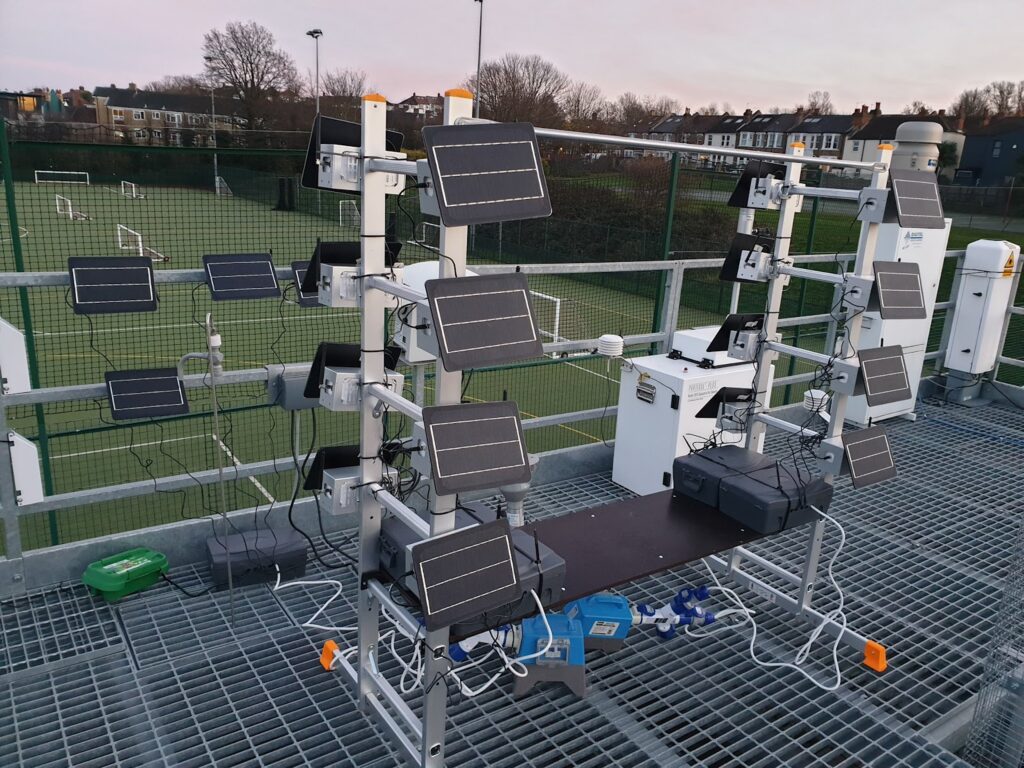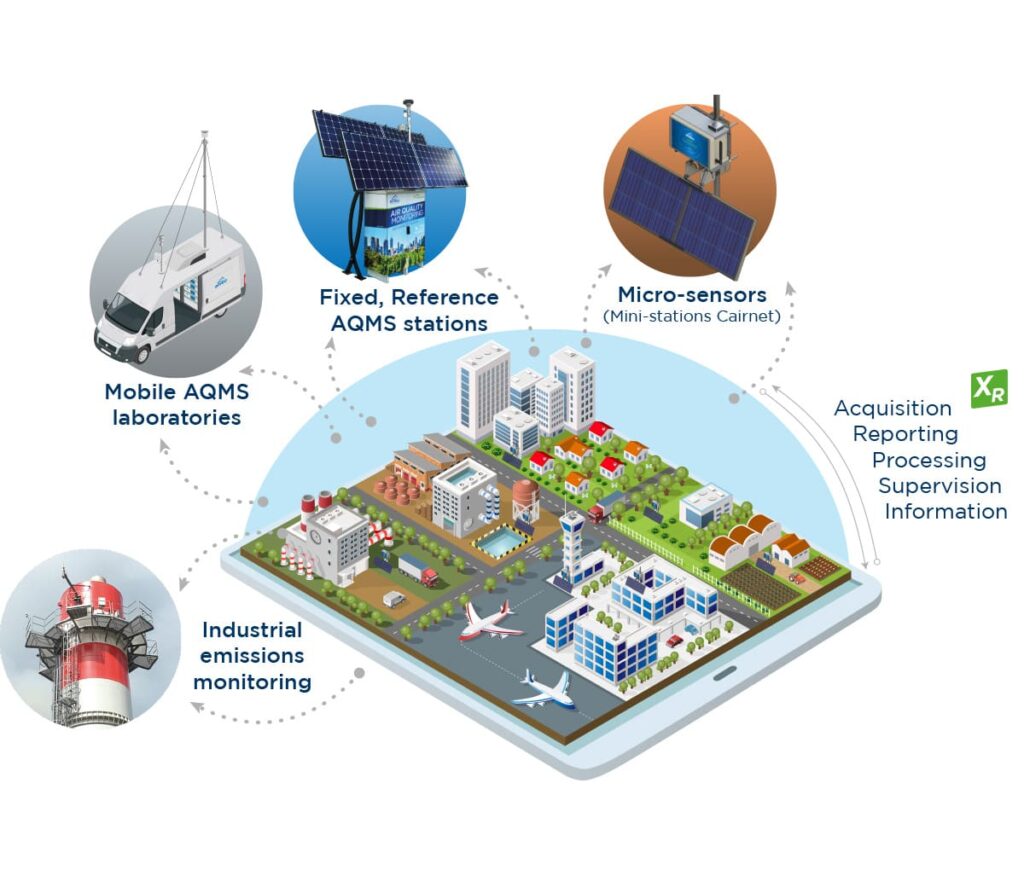Smog-filled skies and poor air quality have long been a concern in many urban areas around the world. The battle against air pollution is ongoing, and one of the most critical weapons in this fight is ambient air monitoring. By systematically measuring and analyzing the quality of outdoor air, ambient air monitoring plays a pivotal role in understanding, addressing, and ultimately mitigating air pollution. In this article, we will delve into the role of ambient air monitoring in pollution control and the path from smog-choked skies to sustainable solutions.

The Challenge of Air Pollution
Air pollution poses significant challenges to public health, the environment, and the overall well-being of communities. It stems from various sources, including industrial emissions, vehicular exhaust, agricultural activities, and natural events. The consequences of air pollution are far-reaching and include:
- Health Impacts: Poor air quality is associated with respiratory diseases, cardiovascular problems, and even premature death, affecting people of all ages.
- Environmental Damage: Air pollution harms ecosystems, contributes to climate change, and damages buildings and infrastructure.
- Economic Costs: The economic burden of air pollution includes healthcare expenses, reduced labor productivity, and the need for pollution control measures.
The Role of Ambient Air Monitoring
Ambient air monitoring plays a multifaceted role in the battle against air pollution:
- Data Collection
- Comprehensive Data: Monitoring stations collect data on various air pollutants, including particulate matter, ground-level ozone, sulfur dioxide, nitrogen dioxide, carbon monoxide, and volatile organic compounds.
- Real-Time Updates: Real-time monitoring provides immediate information about changing air quality conditions.
- Air Quality Assessment
- Standardized Metrics: Air quality is assessed using standardized metrics, such as the Air Quality Index (AQI), which categorizes air quality levels from “good” to “hazardous.”
- Identifying Pollution Sources: Monitoring helps identify pollution hotspots and sources, such as industrial facilities or traffic congestion.
- Public Awareness
- Health Advisories: Monitoring data are used to issue health advisories, especially for sensitive groups, alerting them to potential health risks during poor air quality episodes.
- Community Engagement: Public access to air quality data raises awareness and empowers communities to advocate for cleaner air.
- Policy Formulation
- Regulatory Compliance: Data from monitoring stations are essential for assessing compliance with air quality standards and regulations, enabling governments to implement stricter controls if necessary.
- Evidence-Based Policies: Policymakers rely on monitoring data to develop evidence-based policies aimed at reducing air pollution from various sources.

Innovations in Ambient Air Monitoring
Advancements in technology have enhanced the capabilities of ambient air monitoring:
- Low-Cost Sensors: Affordable air quality sensors allow for the deployment of extensive monitoring networks, increasing data coverage and accessibility.
- Data Analytics: Advanced data analytics and artificial intelligence enable the processing of large datasets to identify pollution patterns and trends.
- Mobile Monitoring: Mobile units equipped with air quality sensors, including drones and vehicles, can capture data from multiple locations, offering insights into localized pollution.
- Remote Sensing: Satellite and remote sensing technologies provide a broader perspective, allowing for the assessment of air quality on a regional and even global scale.
The Path to Pollution Control
Ambient air monitoring serves as a critical bridge between recognizing the problem of air pollution and implementing effective solutions:
- Identification: Monitoring identifies pollution sources, helping regulators and industries target emissions reductions.
- Accountability: Transparency in air quality data holds polluters accountable for their contributions to poor air quality.
- Regulation: Data-driven policies and regulations are implemented to control emissions and improve air quality.
- Public Involvement: Engaged communities use air quality data to advocate for cleaner practices and demand action from authorities.
Conclusion
From smog-filled skies to solutions for cleaner air, ambient air monitoring is at the forefront of pollution control efforts. By providing accurate, real-time data, identifying pollution sources, and engaging communities, monitoring stations play a crucial role in our collective journey toward cleaner, healthier air.
As technology continues to advance and awareness of the importance of air quality grows, the battle against air pollution gains momentum. With continued monitoring, informed policies, and active public participation, we can look forward to clearer skies and a brighter, healthier future.
Frequently Asked Questions
What are some common air pollutants that affect outdoor air quality?
Common outdoor air pollutants include particulate matter (PM2.5 and PM10), ground-level ozone (smog), nitrogen dioxide (NO2), sulfur dioxide (SO2), carbon monoxide (CO), and volatile organic compounds (VOCs).
How can individuals access real-time air quality data for their area?
Many governments and environmental agencies provide real-time air quality data online or through mobile apps. Some low-cost sensors are designed for personal use and come with user-friendly apps.
Are there international efforts to combat air pollution?
Yes, international organizations like the World Health Organization (WHO) and regional bodies work to address air pollution through guidelines, agreements, and cooperation among nations.
Can air pollution be completely eliminated?
While complete elimination may be challenging, significant reductions in air pollution are achievable through regulations, cleaner technologies, and public awareness and participation.
What can individuals do to reduce their contribution to air pollution?
Individuals can reduce their contribution by using public transportation, carpooling, reducing energy consumption, conserving water, and minimizing waste generation. Advocating for clean energy sources and supporting pollution-reduction policies also play a role.
Author Bio
Mr. Parthiv Kinariwala is a leading expert in calibration and testing services, with over 20 years of experience in the industry. As the founder of Prism Calibration, established in 2004, Mr. Kinariwala has been at the forefront of delivering precise and reliable calibration, testing, and validation solutions across various industries. His expertise in providing services that meet international calibration standards has earned the trust of major clients, including Reliance Industries, Zydus Cadila, Indian Oil, ONGC, Adani, and Tata.
With a deep understanding of instrumentation, measurement accuracy, and industrial testing, Mr. Kinariwala ensures that each client receives exceptional service tailored to their specific needs. His unwavering commitment to quality and precision has established Prism Calibration as a trusted partner for some of the largest and most respected organizations in the industry.







